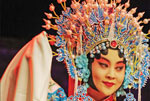Society
Pole dancing shakes off ill repute in China
Updated: 2011-05-15 10:45
By Tiffany Tan (China Daily)
 |
|
Pole dancing in China is a fitness trend with slightly saucy appeal. [Photo by Michael Paul Franklin / China Daily] |
It was the major draw at strip clubs in Las Vegas and the sleazier nightspots in party cities, but in China, pole dancing has shaken off its ill repute to become a bona fide fitness activity - and business opportunity. Tiffany Tan takes to the floor and dangles from a pole to get the inside story.
Deng Jun has traveled 1,700 kilometers from home, leaving behind husband and two young sons. Her mission: To learn pole dancing in the Chinese capital. Two weeks into her classes at Lolan Pole Dancing School, which claims to be the first such institution on the Chinese mainland, Deng's arms and legs are decorated with bruises. Some add a touch of brown to the red-and-black tattoo on her left upper arm. She's in the dance studio five hours a day, six days a week, mastering moves like "pole-climbing technique" and "pole descent dance". She is committed to this grueling routine for at least the next four months, and she has already spent 10,300 yuan or $1,600.
"I had children at a young age, and now that they're older, I'd like to make something of myself," says the 27-year-old who is married to a businessman in Guiyang, capital of the southwestern province of Guizhou. Once Deng earns her pole dancing credentials, she plans to return home and open a pole dancing school.
"I believe it will be popular among those who want to be professional pole dancers and those who want to lose weight," she says between puffs on her cigarette during a break. "I've already lost 3 kilograms within just 10 days."
Deng's bid to establish an identity outside of wife and mother is, interestingly, tied in with pole dancing's rising popularity in China as a career, a fitness regimen and a hobby.
At 19, Jin Yun became so enthralled with both the creativity and strength required in pole dancing - which she discovered in a local gym - that she lied to her parents about why she was heading to the national capital.
"They thought I was going to Beijing to take makeup classes," says Jin, who used to work in a beauty salon in her home province of Zhejiang.
She knew her folks would never approve of her plan to become a pole-dancing teacher.
"They think pole dancing is too sensual, that the outfits are too revealing But I really like pole dancing." Jin's words trip over each other in her eagerness to convey how the dance has changed her life.
"It can give you a better figure, increase your confidence and charm, and make you healthier and more beautiful."
Despite disapproving attitudes from the student's parents, pole dancing appears to have a more favorable reputation in China than it does in the West, where it's closely associated with strip clubs.
"Most people here haven't even heard of pole dancing," says Cicilia Yang, the Canadian-Chinese owner of Pussycat Dance studio, which offers pole-dancing classes. "For them it's just a new style of dance they regard it as just another dance or sport."
Head shakes and raised eyebrows from the Chinese may be attributed to pole dancers' skimpy costumes and suggestive movements, says Sigrid Ekman, a Swedish-Norwegian pole dancing aficionado who's been in China for three years.
"In China it doesn't have the same connotation that it does in the West." And Ekman says she only gets the question, "Do you work as a stripper?" from fellow foreigners, never from the Chinese.
This perspective largely explains why pole dancing has entered the Chinese mainstream within the past five years.
To gain experience performing in public, Jin Yun and some classmates joined The Hilton Zeta Bar's annual pole dancing contest in March, co-sponsored by their school, Love Show Dance Vocational Training Institute.
Jin claimed third place among the 11 competitors despite starting lessons only six months earlier. Ekman, 27, the only non-Chinese contestant, was named "Miss Pole-pular".
Some of Love Show's pole dancing students have gone on to become club pole dancers in big cities like Beijing and Shanghai, while others have put up dance studios or become regular performers on television variety shows, said the school's co-owner Wang Baobao, herself a former pole dancer from the central province of Henan.
Zeta Bar's pole dancing contest, on its third year, drew some 200 guests, the majority of whom were foreigners. They included novices to the mainland's brand of pole dancing.
"It isn't what I expected," said William Glaser, from the United States. "It's more of a cultural show," he said, referring to regular intermission numbers in which the contestants swayed together to pop tunes while garbed in various traditional costumes.
"Next year we plan to involve male contestants," said Zeta Bar's manager An Jinjin. "We want to show that pole dancing is not only for women." The organizers were clearly encouraged by the audience's warm reception to the evening's guest performers - male pole dancers.
This is another striking characteristic of pole dancing in China: it attracts both male and female dancers - and nobody blinks an eyelash. Some male dancers writhe and gyrate more seductively than women, while others move with the power and precision reminiscent of gymnasts.
Among the latter is 23-year-old Li Hongliang. As a fourth year arts management major at Beijing Contemporary Music School, he's trying to make ends meet by working part time as a gym trainer. He also moonlights as a pole dancing instructor.
Li discovered pole dancing at a Beijing gym three years ago and soon after signed up for lessons. A year and a half later, he began teaching. "I like the techniques used in pole dancing and how it can show off a guy's masculinity," says Li, who, in his cargo pants, sleeveless shirts and sneakers, makes striking a pose 5 feet off the ground look effortless.
"I hire male instructors to help correct stereotypes about pole dancing," says Luo Lan, 41, who put up Lolan Pole Dancing after seeing the dance performed during a Paris trip 10 years ago.
"I want people to know it not only as an erotic art but also as a healthy physical activity for both men and women."
For Lolan's artistic director, Wang Zhongxing, male teachers infuse pole dancing with a forceful energy that is not always present with female dancers.
Like his boss Luo Lan, Li Hong-
liang wants to open his own dance school someday. But for now, the pole dancing aspect of his life is a secret to those closest to him. "My family's very traditional," says the native of Inner Mongolia.
"They'll find the dance too sensual, they're not going to approve of it."
Meanwhile, inside the for-ladies-only Pussycat Dance studio, pole-dancing students are working hard at the pole, motivated precisely by the erotic nature of the dance.
"Women come here primarily to feel more sexy," says owner-instructor Cicilia Yang. "Inside every woman is a pussycat wanting to come out."
E-paper

Green works
Wuxi becomes 'test case' for facing country's environmental challenges
The global rise of Chinese brands
China-EU trade on solid ground
ZTE banks on innovation
Specials

The song dynasty
There are MORE THAN 300 types of Chinese operas but two POPULAR varieties are major standouts

Cut above the rest
One of the world's oldest surgeons has performed more than 14,000 operations

From the ground up
Architect of Guangzhou Opera House has many projects under way, including 2012 Olympics.
